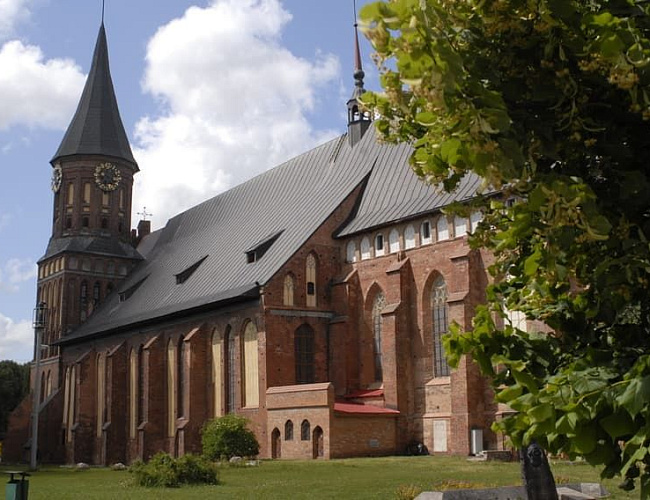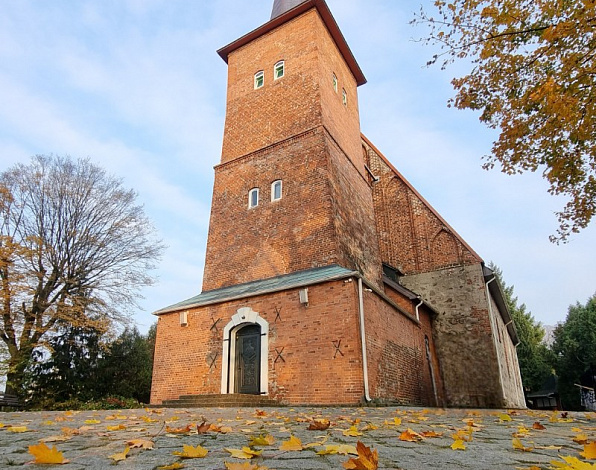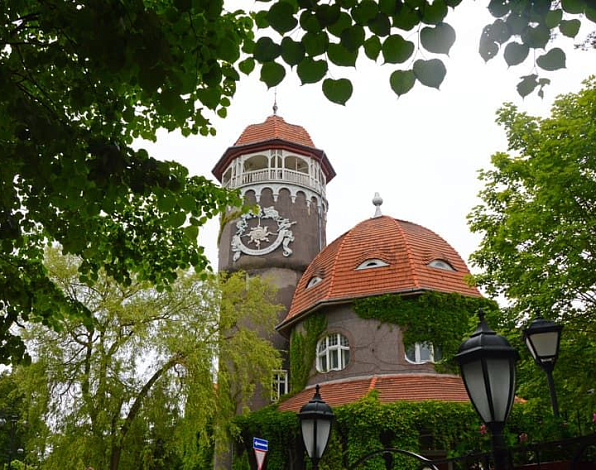Königsberg (Kaliningrad) Cathedral
The cathedral's bookmark dates back to 1333, when Bishop Johannes Clara began constructing the structure. He began by building a walled bishop's courtyard in the eastern half of Kneiphof. Later, a covered gallery and shelter were added to the southern part of the courtyard.
Initially, the cathedral was designed as a fortification. This is evident from the three-meter thick eastern wall, which was meant to protect the building. A wide passageway for defenders was also planned on top of the massive wall, with corner towers attached. However, the owner of the land, Grand Master Luther von Braunschweig, opposed these plans. As a result, the thickness of the northern and southern walls was halved.
By 1351, the cathedral was covered with a roof, and, according to the decision of Grand Master Winrich von Kniprode, its reconstruction immediately began. This process continued until 1382. In the middle of the XVI century, both towers of the cathedral were destroyed and rebuilt with a noticeable influence of the Renaissance style.
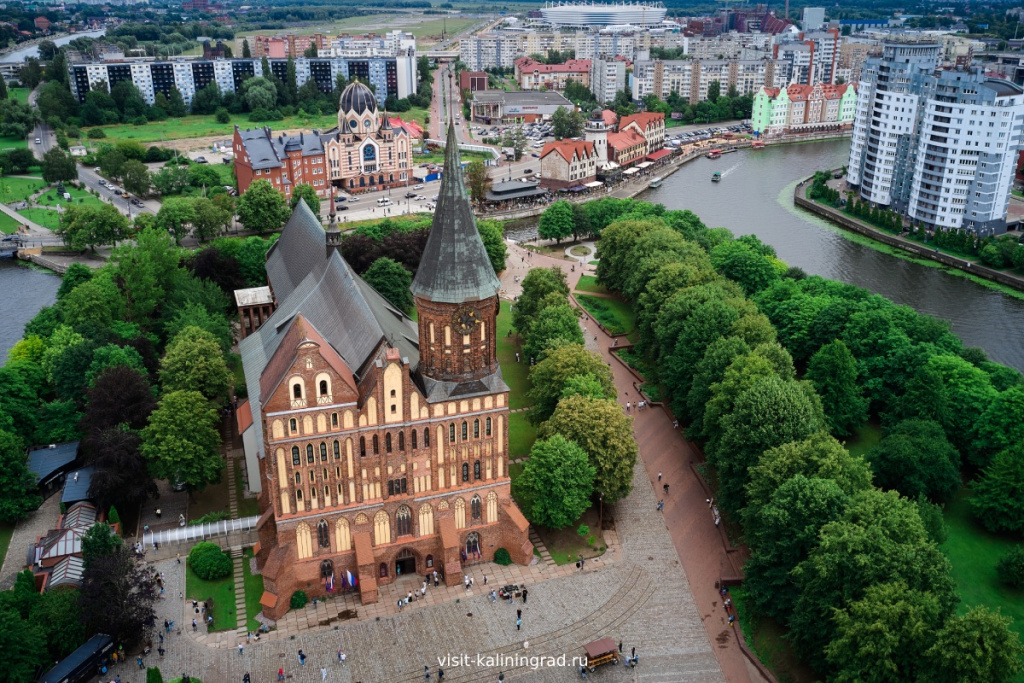
In 1380, the main construction of the building was completed, but work on the cathedral continued after that. The naves were decorated with frescoes, towers were attached to the facades, and a weathervane in the form of a mermaid was installed on the spire of one of them. This magnificent temple became the spiritual heart of the city, and over time it «demanded» an appropriate musical instrument - for example, an organ was installed in the cathedral. It stood there until the end of the XVI century. By the end of the XVI century, musicians from Krakow and other cities began to come to the cathedral to learn how to play the organ.
In 1587, the cathedral was once again replaced by an organ, which a few years later already had 60 registers. Thanks to its magnificent design, the organ gained fame as «the largest and most representative organ in all of Prussia». However, this did not seem enough to the parishioners of the cathedral, and in 1721 master Johann Mosengel created a new large Baroque organ with 78 registers and almost four thousand pipes. Contemporaries called this organ an «outstanding work of art», and parishioners enjoyed its sounds for more than two centuries. The famous writer Ernst Theodor Amadeus Hoffmann learned the basics of music on this instrument. In 1587, the cathedral once again changed the organ, which, after several years, already had 60 registers. Thanks to its spectacular decoration, the organ gained the glory of being «the largest and most representative organ in all of Prussia». However, this was not enough for the parishioners of the cathedral, and in 1721, the master Johann Mozengel created a new large organ - in the Baroque style with 78 registers and nearly four thousand pipes. This organ was called «an outstanding work of art» by contemporaries, and the parishioners enjoyed its sounds for over two centuries. On this instrument, the famous writer Ernst Theodore Amadeus Hoffman learned the basics of music.
Until 1528, the cathedral served as the main Catholic church in the city. However, the Reformation era brought about changes, and in the 16th century, the church became a Lutheran parish church for the Kneiphof community. A few years later, it was transferred to the Albertine University.
Since 1558, all professors who worked in front of the university building have been granted the right to be buried in an open gallery along the north wall of the choir. Immanuel Kant in 1804 was the last to find peace within the walls of the cathedral.
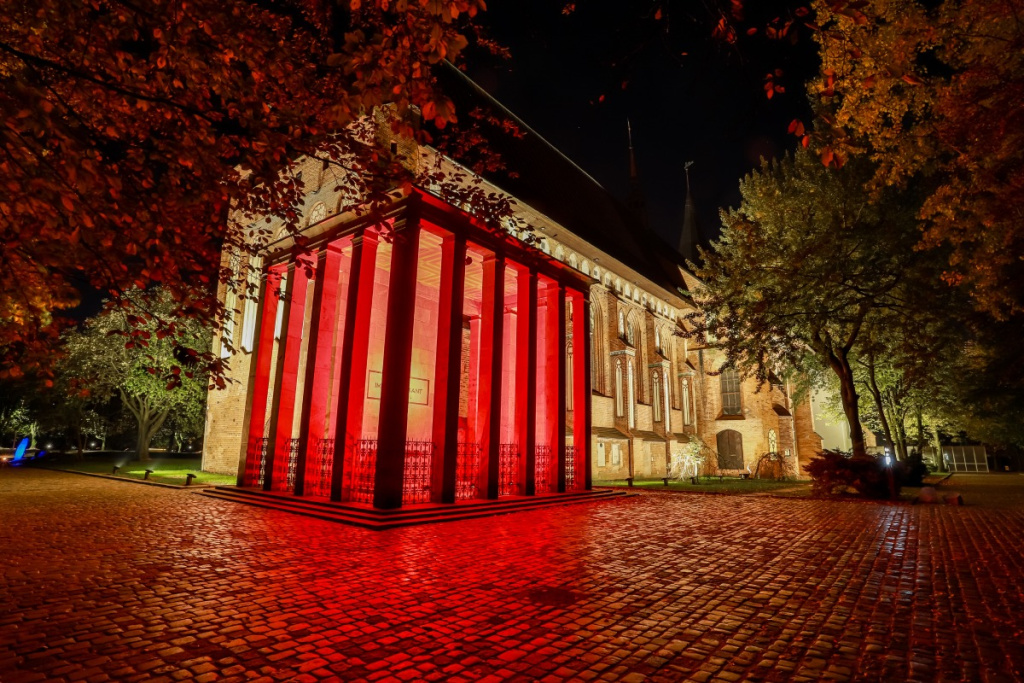
In the 19th century, the cathedral was going through difficult times. In 1807, when Napoleon's troops occupied Konigsberg, the temple became a prison and then a hospital. Fortunately, this period was short-lived, and soon the cathedral returned to normal life. In 1880, a chapel was added to the building in memory of Immanuel Kant. His remains were buried here.
In 1928, the fourth organ appeared in Königsberg Cathedral. Emil Hammer, a firm from Hannover, built a new instrument that retained the baroque style and decorations. Unfortunately, fate had a short life for this instrument: on the night of August 28-29, 1944, a British air raid and subsequent fire destroyed it.
New reconstruction began in 1990, and continues to this day. Today, Orthodox and Protestant chapels can be found within the cathedral premises, and the tower houses a museum with exhibitions.
In 2008, the cathedral's new organ complex was played for the first time.

The organ hall's technical specifications are impressive: 6,301 pipes for the large organ and 2,224 for the small one, totalling 122 registers. These two organs are connected by fiber-optic communication and equipped with computers. Organists can use the capabilities of both instruments, and musicians can communicate and interact with each other.
The largest organ complex in Russia was constructed by the skilled craftsmen of the Alexander Shuke company. The process involved several stages, including the preparation of a balcony for the instrument, which weighed approximately 35 tonnes, and the construction of a metal frame that stood three stories high. Simultaneously, work was underway on the decoration, with the aim of bringing the look of the organ as close to that of the Konigsberg Cathedral's instrument as possible.
The impressive Baroque-inspired facade of the organ features wooden carvings and sculptures, including a representation of the Virgin and Child and moving putti, as well as the Phoenix, which has become a symbol of the cathedral's rebirth. Today, regular mini-concerts featuring organ music take place in the cathedral's concert hall.
Another places








